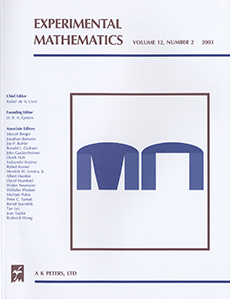Abstract
We study rational maps of the real or complex projective plane of degree two or more, concentrating on those that map a genus-one curve onto itself, necessarily by an expanding map. We describe relatively simple examples with a rich variety of interesting dynamical behaviors that are perhaps familiar to the applied dynamics community but not to specialists in several complex variables. For example, we describe smooth attractors with riddled or intermingled attracting basins, and we observe ``blowout'' bifurcations when the transverse Lyapunov exponent for the invariant curve changes sign. In the complex case, we prove that the genus-one curve (a topological torus) can never have a trapping neighborhood, yet it can have an attracting basin of large measure (perhaps even of full measure). We also describe examples in which there appear to be attracting Herman rings (topological cylinders mapped to themselves with irrational rotation number) with open attracting basin. Section 8 provides a more general discussion of Herman rings and Siegel disks for arbitrary holomorphic maps of $\bP^2(\C)$, and the last section outlines open problems
Citation
Araceli Bonifant. Marius Dabija. John Milnor. "Elliptic Curves as Attractors in ${\mathbb P}^2$, Part 1: Dynamics." Experiment. Math. 16 (4) 385 - 420, 2007.
Information




